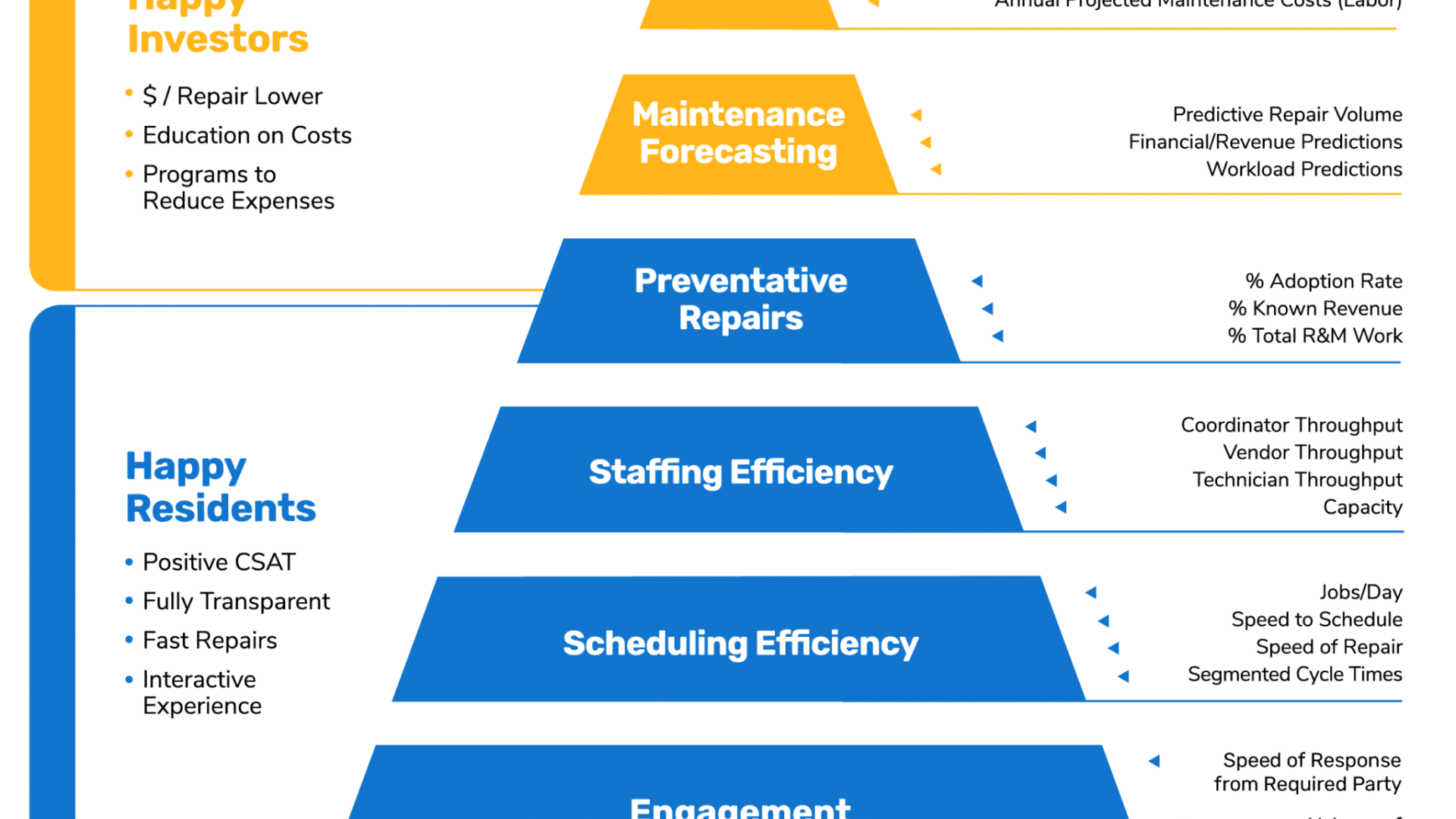After you have solved effective communication, you can move on to the next step on the Ladder of Maintenance Excellence, scheduling efficiency.
You will know if you’ve achieved scheduling efficiency if you have the right resources in the right place at the right time in the most efficient manner possible. Scheduling efficiency is not always about how fast your process is, but that you are assigning the right vendor or technician to the job when they need to be there.
The amount of tradespeople in the industry is not increasing at the same rate as the demand. Property management companies must maximize their team by equipping them with the right tools to be as efficient as possible. Increasing your scheduling efficiency will lead to higher resident satisfaction. This will also increase your company’s output with the same amount of resources, allowing you to make more money.
How Can You Measure Scheduling Efficiency?
There are many maintenance metrics you can utilize to measure scheduling efficiency. Tracking jobs per day for both vendors and internal technicians can help ensure your team is working productively. In addition, following your repair speed or cycle time allows you to see how quickly your maintenance team can finish a specific task. Your repair speed, or cycle time, is the measure of how long it takes to complete a work order from the resident submission to completion.
What Factors Impact Scheduling Efficiency?
Measuring scheduling efficiency may be challenging because there are many factors or steps in the maintenance process that could negatively impact your ability to get repairs done promptly. You must determine where your inefficiencies are to improve your efficiency. Listed below are some of the crucial steps in a work order process that may be holding up your team:
- Time the work order is received
- The amount of time it takes to troubleshoot
- Time to assign
- Assignment to the scheduling of work
- Scheduling the completion of the work
- Following up with residents and receiving the invoice
The best way to improve efficiency is to look at each step, determine why there may be inefficiencies, and then decide what factors impact it and how to improve. Your team’s efficiency will undergo a significant improvement by enhancing each of these steps.
A lack of understanding of the maintenance process often makes it challenging for property management companies to achieve scheduling efficiency. Access to in-depth data regarding overall maintenance is necessary to determine where inefficiencies occur.
With Property Meld’s unmatched maintenance data, you can dive deeply into your metrics, set goals for your team, and work to improve processes.
See how our software can provide complete oversight of your maintenance process.
How Can You Improve Scheduling Efficiency?
The best way to improve scheduling efficiency is by evaluating the throughput of your maintenance team. Start tracking how many hours they log per job and how many jobs are completed daily. Once you have this information, you can determine where the repair lifecycle needs to be optimized. Is it the scheduling, the assignment, or the actual repair itself that is taking too long?
Subscribe to The Maintenance Minute, a weekly thought-leadership newsletter that will help you achieve maintenance excellence and improve your processes.





